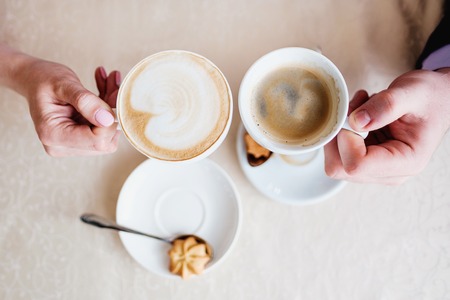1. Introduction: A Nations Drink Dilemma
Step onto any bustling British high street, and youll find yourself at the crossroads of a cultural conundrum: espresso or English breakfast? The UK has long been celebrated for its enduring tea traditions, yet over recent decades, coffee culture has surged with continental flair. Today, the nations taste buds are tantalised by both the robust intensity of a well-pulled espresso and the comforting familiarity of a classic English breakfast brew. This delicate dance between old-school tea rituals and the modern allure of artisan coffee shops speaks volumes about Britain’s evolving identity. As we journey across the UK, from London’s hipster cafes to Yorkshire’s stately tearooms, we’ll delve deeper into the heart of this national drink dilemma—unpacking not just what people are drinking, but why these choices resonate so deeply in everyday life.
2. Espresso on the High Street: The Rise of Coffee Culture
Once upon a time, the British high street was ruled by tea rooms and greasy spoons, each with its own secret blend of English Breakfast or Earl Grey. Yet walk down any bustling street in London, Manchester, or even a sleepy Cornish village today, and you’ll find coffee shops competing for pride of place. The espresso has become a symbol of Britain’s cosmopolitan edge—fuel for creatives, commuters, and culture seekers alike.
Britain’s journey to coffee obsession began quietly in independent cafés—often tucked away in London’s labyrinthine streets—where baristas experimented with single-origin beans and latte art long before it hit the mainstream. As word spread, chains like Costa and Pret popped up on nearly every corner, making the rich aroma of freshly ground beans part of daily life from Edinburgh to Brighton.
What sets UK coffee culture apart is its blend of global trends with local quirks. Whether it’s a flat white served in a Bristol warehouse or an espresso sipped at sunrise on a Scottish loch, each cup tells a story of tradition meeting modernity. Here’s a snapshot comparing the types of coffee spots found across the UK:
| Café Type | Location | Signature Drink | Atmosphere |
|---|---|---|---|
| Independent Roaster | London, Leeds, Brighton | Single Origin Espresso | Artisanal, Hipster |
| High Street Chain | Nationwide | Cappuccino/Latte | Fast-paced, Familiar |
| Community Café | Countryside Villages | Cafetiere Coffee | Cosy, Welcoming |
| Trendy Pop-Up | Urban Markets | Iced Flat White | Innovative, Lively |
This transformation hasn’t just changed what we drink—it’s altered how we meet, work, and unwind. Today’s British café is as much about lingering over conversation as it is about the caffeine kick. From locally sourced pastries to bespoke brews, the espresso revolution has carved out its own place in the heart of British social life.
![]()
3. English Breakfast Tea: Tradition in a Cup
If you wander through any British high street, the comforting aroma of freshly brewed English Breakfast tea is never far away. More than a morning pick-me-up, this beloved blend is woven into the very fabric of UK daily life—a symbol of hospitality, warmth, and steadfast tradition. While espresso bars are rising in popularity, nothing quite rivals the universal appeal and gentle ritual of a steaming cup of English Breakfast.
The Cultural Heartbeat
English Breakfast tea isn’t just a drink; it’s an experience that transcends generations. Whether shared at home with family or sipped quietly in a bustling café, it embodies the unhurried pace and cherished routines of British living. From afternoon teas to humble kitchen tables, this robust black tea blend—typically Assam, Ceylon, and Kenyan leaves—anchors countless moments of connection and comfort.
The Art of Brewing
In Britain, making tea is a near-sacred art form. The water must be boiling hot; the teapot is often warmed first, and loose leaves or quality bags steep for precisely two to five minutes. Milk is almost always added (though debates rage about whether it goes in before or after the tea). Each step is deliberate, an act of mindfulness that invites pause in a hectic day.
A Hug in a Mug
No matter where your travels take you across the UK—from London’s boutique hotels to Cornwall’s windswept cottages—English Breakfast tea offers solace and familiarity. It’s the go-to remedy for rainy afternoons and life’s little setbacks, providing not just refreshment but also reassurance. In the great coffee vs. tea debate, there’s no denying the powerful nostalgia and sense of belonging that comes with every cup.
4. Regional Sips: Preferences from North to South
If you think ordering a coffee or tea in the UK is a simple affair, think again. From the Highlands of Scotland to the historic lanes of Cornwall, Britain’s beverage habits are as diverse as its landscapes. The country’s north-south divide isn’t just about accents or weather—it seeps into every cup and mug, reflecting local character and culture.
Northern Brews: Bold and Hearty
In cities like Manchester, Leeds, and Glasgow, locals tend to favour strong, no-nonsense brews. Traditional English Breakfast tea remains a staple, often served with a dash of milk and a sweet treat. Yet, coffee culture is on the rise—independent cafés in these northern hubs are known for robust espressos and punchy flat whites, catering to both early risers and late-night creatives.
Southern Sips: Cosmopolitan Choices
Travel south to London, Brighton, or Bristol, and you’ll find an entirely different flavour profile. Here, the cosmopolitan crowd embraces artisanal coffee houses offering single-origin espressos, oat-milk lattes, and cold brews. Tea still holds court in many homes, but there’s a noticeable tilt towards specialty coffee—a nod to global trends and the capital’s international influence.
Regional Coffee & Tea Preferences Table
| Region | Popular Hot Drink | Typical Order Style |
|---|---|---|
| Scotland & Northern England | English Breakfast Tea / Strong Espresso | Traditional with milk / Straight up espresso |
| The Midlands | Builder’s Tea / Americano | Mug with sugar / Large filter coffee |
| London & South East | Flat White / Single-Origin Latte | No foam latte art / Plant-based milks popular |
| South West (Cornwall & Devon) | Cream Tea (with scones) / Cappuccino | Cream-first tradition / Lightly dusted cappuccino |
Sipping Beyond Stereotypes
While these trends capture regional tendencies, British drinkers are famously open-minded. Local cafés from Newcastle to Newquay adapt menus to suit neighbourhood tastes—think Yorkshire tea in posh Mayfair or matcha lattes in rural Cumbria. It’s this blend of tradition and trend that keeps the UK’s café scene vibrant and ever-evolving.
5. British Lingo: Ordering with Style
If you want to blend in at a UK café, mastering the local coffee and tea lingo is essential. Beyond choosing between espresso or an English Breakfast, there’s a unique lexicon that shapes every order—each phrase carrying a subtle nod to British culture. Here’s your guide to navigating the menu and counter with confidence.
‘Builder’s Brew’: The Backbone of British Tea
Ask for a “builder’s brew” and you’ll be served a strong, robust cup of tea—usually black, with plenty of milk and maybe two sugars. It’s the drink of choice for hardworking Brits up and down the country, especially on a chilly morning. Use this term and you’ll win a few smiles from behind the counter.
Flat White: A Kiwi-Aussie Import, Now a UK Staple
The flat white has become a staple in British coffee culture, thanks to Antipodean influence. Order one if you fancy something smoother than a cappuccino but stronger than a latte—a double shot of espresso topped with velvety microfoam. It’s pronounced just as it reads: “flat white.”
Americano vs. Long Black
If you’re looking for something similar to drip coffee, go for an Americano—espresso diluted with hot water. In some trendy spots, you might also spot the “long black,” which reverses the order for a bolder flavour.
Cuppa, Latte, or Mocha?
“Cuppa” is shorthand for a cup of tea (or sometimes coffee), usually enjoyed in cozy moments or shared gossip. If you’re after something creamier, opt for a latte (pronounced “lah-tay”), while mocha lovers can enjoy their chocolate-espresso blend without having to explain themselves—just ask for “a mocha.”
Empowering Your Order
Armed with these phrases—from builder’s brew to flat white—you’ll not only get exactly what you want but also earn instant local credibility. Next time you step into a café from London to Liverpool, order with confidence—and perhaps even spark up a chat about your favourite brew.
6. Pairings and Pastries: Culinary Companions
Across the UK, beverages are rarely enjoyed in isolation—they’re a ritual best shared with just the right culinary companion. For generations, the British have cherished the art of dunking a biscuit into their robust English Breakfast tea, savouring how a simple digestive or buttery shortbread soaks up the warmth and flavour. The choice of biscuit is often deeply personal, ranging from classic Rich Tea to the beloved Hobnob, each offering its own unique pairing pleasure. Meanwhile, coffee culture has carved out its own indulgent corner, especially in cosmopolitan hubs like London or Manchester. Here, an espresso isn’t just a morning jolt; it’s a chance to linger over a flaky almond croissant or a decadent pain au chocolat. Artisanal bakeries and independent cafés have elevated these pairings, with sourdough pastries or pistachio-studded buns served alongside strong shots of espresso or velvety flat whites. Whether it’s elevenses with tea and biscuits or an Italian-inspired moment with coffee and pastry, these rituals reflect both tradition and evolving taste—uniting comfort and sophistication in every bite and sip.
7. Conclusion: Choosing Your Cup
In the end, whether you find yourself reaching for a bold espresso or the comfort of an English Breakfast tea, your choice is so much more than just a morning ritual—it’s an expression of both personal taste and cultural heritage. The UK’s evolving café scene has made room for continental coffee culture while never letting go of its deep-rooted love for a proper brew. Each cup, from the quick-fire intensity of espresso to the soothing familiarity of black tea with milk, tells a story about who we are and where we come from. As you explore coffee houses from Edinburgh to Brighton, you’ll notice how these drinks serve as social touchstones—bringing people together, sparking conversation, and reflecting the diversity found across the British Isles. So next time you’re faced with the question—espresso or English Breakfast?—remember that your answer is a small but significant part of Britain’s ongoing story of taste, tradition, and identity.


